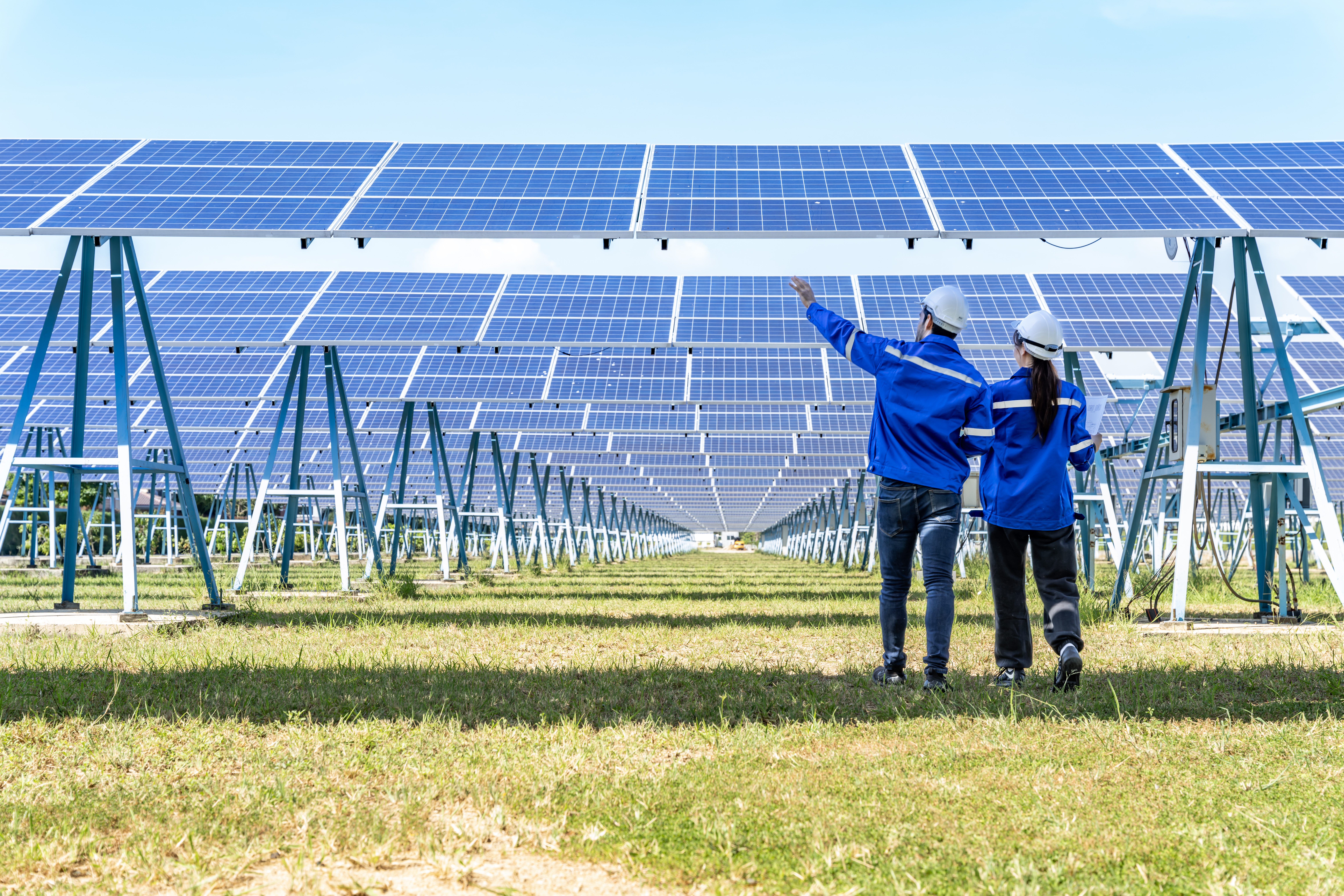Project Financing in Renewable Energy: A Comprehensive Guide
The transition to renewable energy is no longer just a futuristic concept but a pressing reality. Governments and companies worldwide are under increasing pressure to reduce carbon emissions and shift towards sustainable energy sources. However, financing the development of renewable energy projects remains a significant challenge. With high upfront costs and various risks involved, finding the right funding strategy is crucial. This is where project finance comes into play, providing a structured way to fund large-scale renewable energy projects.
What is Project Finance?
Project finance is a way to structure the funding of a capital intensive project or asset. Most of the funding comes from loans, which are repaid mainly from the cashflows the project generates. This method is often used for large projects that need a lot of money upfront. The project’s risks are shared among the stakeholders, usually through a special purpose vehicle (SPV), a separate company created just for this project.
A well known asset, usually structured as project finance, is a toll road to go from destination A to B. The collected toll road fees are used to pay interest and repayment on the granted loan used to realise the road. After debt payments have been made, other investors (like equity investors) will be paid. In general, project’s assets are used as collateral to the loan. This type of financing is common in renewable energy projects because building solar, wind, or energy storage projects is capital intensive and are generating cashflow on a standalone basis.
Key concepts
Here’s a breakdown of the key concepts associated with project finance:
- Debt Repayment: The loans are primarily repaid from the income generated by the project.
- Risk Allocation: Risks are identified and shared among stakeholders at the project’s outset.
- Special Purpose Vehicle (SPV): A separate legal entity is often created to manage the project.
- Non-Recourse Finance: Lenders have limited recourse beyond the project’s assets.
While the terms “non-recourse finance” and “limited recourse finance” are often used interchangeably with project finance, true non-recourse finance is rare. In most cases, there is some recourse to the borrower or sponsor, such as guarantees or commitments to cover cost overruns.
The notion of risk
Key risks that need to be managed include development, construction, operation, market, political, foreign exchange (if applicable) and legal risks. The terms of the financing are highly structured, with strict conditions to minimise an event of default or bankruptcy.
These risks are managed through highly structured terms, including covenants like Debt Service Cover Ratios (DSCR), equity ratios, guarantees, and comprehensive security packages.
Perfect for renewable energy projects
Project finance is especially suited for renewable energy projects due to their capital-intensive nature. By structuring the financing primarily through debt, the amount of equity required is reduced, making the project more financially viable. Additionally, debt capital typically has a lower cost than equity.

The Evolution of Project Financing in Renewable Energy
Over the past few decades, the landscape of renewable energy project financing has evolved significantly. This evolution has been driven by various factors, including technological advancements, decreasing costs, and strong governmental support. Here are some key points in the evolution:
- Decreasing Costs: The cost of renewable energy projects, particularly wind and solar, has decreased dramatically due to technological advancements and economies of scale. Once installed, wind and solar energy have negligible fuel costs since their primary resources (wind and sunlight) are free.
- Government Support: Governments worldwide have set ambitious clean energy targets, providing subsidies and incentives to promote renewable energy projects.
- Investor Confidence: As developers gained experience and projects became more standardised, investor confidence grew, leading to increased investments in the sector.
According to BloombergNEF, global investment in the low-carbon energy transition surged by 17% in 2023, reaching $1.77 trillion. Additionally, global annual renewable capacity additions increased by almost 50% to nearly 510 GW in 2023, marking the fastest growth rate in two decades. The International Energy Agency (IEA) has also highlighted the need for significant action, urging governments to support the goal of tripling global renewable power capacity by 2030.
Investment Opportunities in Clean Energy
While wind and solar projects have become mainstream, new and alternative assets like energy storage, biogas, hydrogen, and waste-to-energy are gaining traction. Energy storage, in particular, is crucial for balancing supply and demand in renewable energy.
- Energy Storage Systems (ESS): Batteries and other storage technologies store excess energy generated by wind and solar farms, which can then be used when there is less wind or sunlight. This helps stabilise the grid and ensures a reliable energy supply.
- Biogas and Hydrogen: These emerging technologies are also becoming viable options for renewable energy projects. They offer different benefits, such as converting waste into energy or producing clean fuel.
Investing in these new technologies requires a deep understanding of their unique risks and business models. For instance, energy storage projects must consider regulatory risks, technology risks, and market dynamics.
Investor Considerations and Challenges
Investing in renewable energy projects presents several challenges, including:
- Government Support: A less favourable support regime from governments can affect the profitability and viability of projects.
- Market Risks: Renewable energy projects often face market risks, such as fluctuating energy prices.
- Complex Business Models: Projects like battery energy storage, energy efficiency, and hydrogen have complex business models and technological risks.
According to the IEA Renewables 2023 report, challenges differ by country and fall into four main categories:
- Policy Uncertainties: Delayed policy responses to the new macroeconomic environment.
- Grid Infrastructure: Insufficient investment in grid infrastructure hinders the faster expansion of renewables.
- Administrative Barriers: Cumbersome permitting procedures and social acceptance issues.

The Future of Renewable Energy Financing
The future of renewable energy financing looks promising, albeit with challenges. Here’s a glimpse of what lies ahead:
- Mature Sector: As the sector matures, costs continue to decrease, making renewable energy projects more financially viable.
- Governmental Support: Strong governmental support schemes will remain crucial for the sector’s growth.
- Market Dynamics: The renewable energy market is becoming crowded, leading to squeezed margins. Developers must navigate cost inflation, geopolitical turbulence, and high-interest rates.
Despite these challenges, several milestones are expected over the next five years:
- In 2024, wind and solar PV will generate more electricity than hydropower.
- In 2025, renewables will surpass coal as the largest source of electricity generation.
- Wind and solar PV will each surpass nuclear electricity generation in 2025 and 2026, respectively.
- By 2028, renewable energy sources will account for over 42% of global electricity generation.
Under existing policies, global renewable capacity is forecast to reach 7,300 GW by 2028. However, to achieve the goal of tripling capacity by 2030, governments need to overcome current challenges and implement policies more quickly.
Conclusion
The journey of renewable energy financing has been transformative, driven by technological advancements, decreasing costs, and robust governmental support. As the sector continues to evolve, project finance remains a critical tool for funding large-scale renewable energy projects. By understanding the complexities and opportunities, stakeholders can better navigate this evolving landscape and contribute to a more sustainable future.
If you’re looking to finance your renewable energy project, our team at Sustainable Capital Group is ready to help. Contact us to learn more about how we can assist you in structuring your capital need and achieving your sustainable growth targets.
Any questions?
At Sustainable Capital Group, we understand Sustainable Finance like no other. For tailored guidance, simply fill out our contact form, and we’ll be in touch with you shortly.



